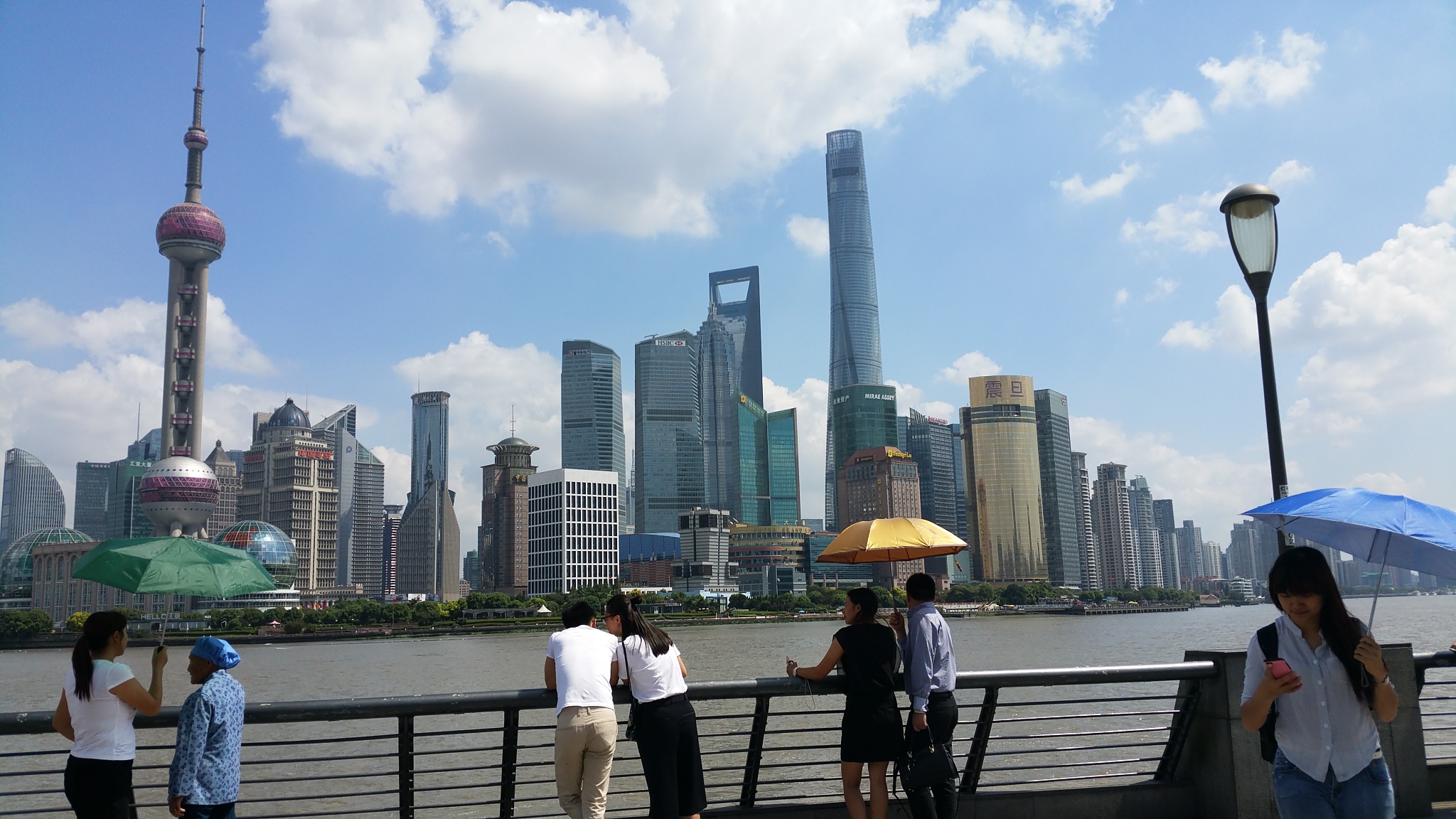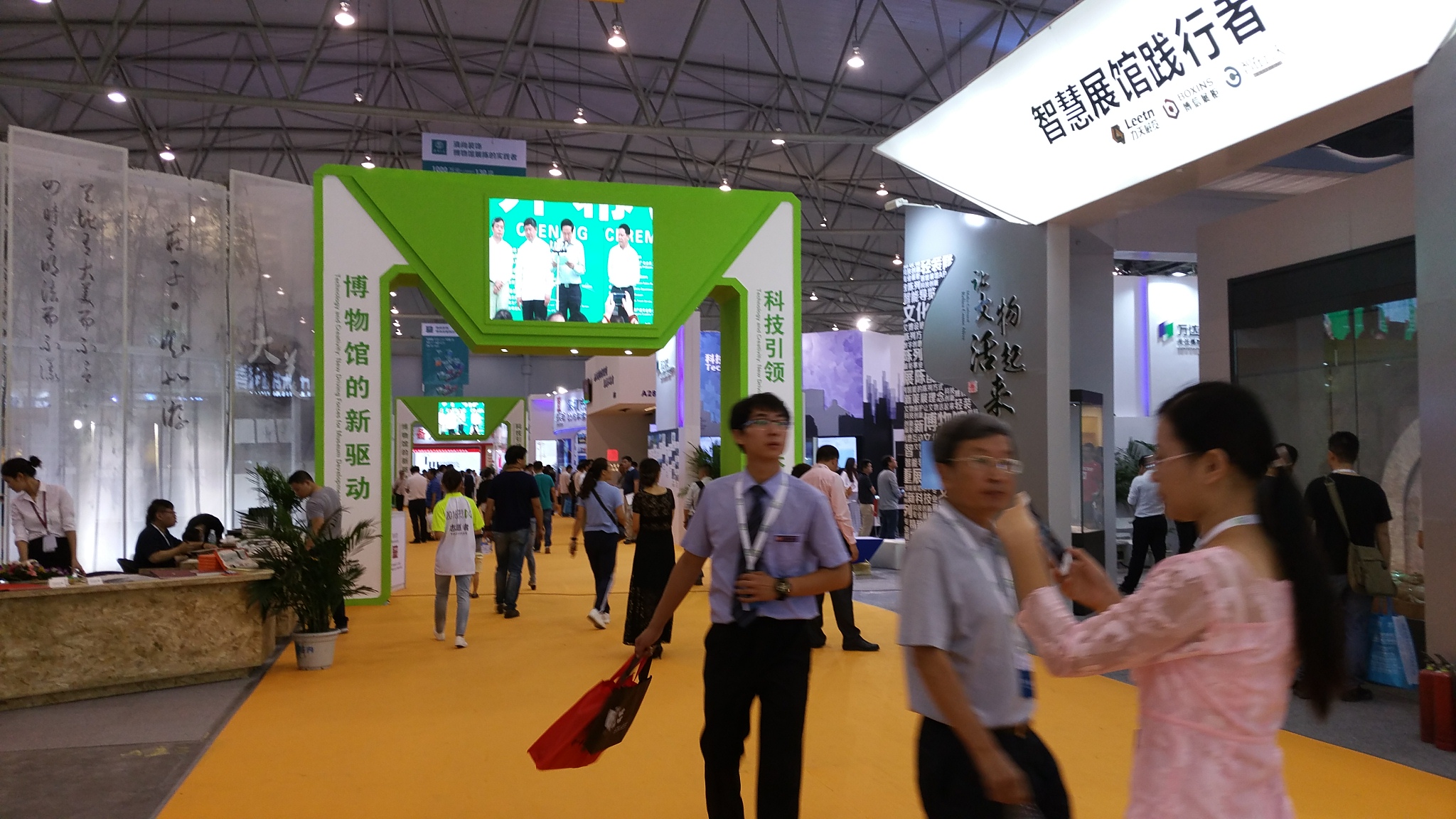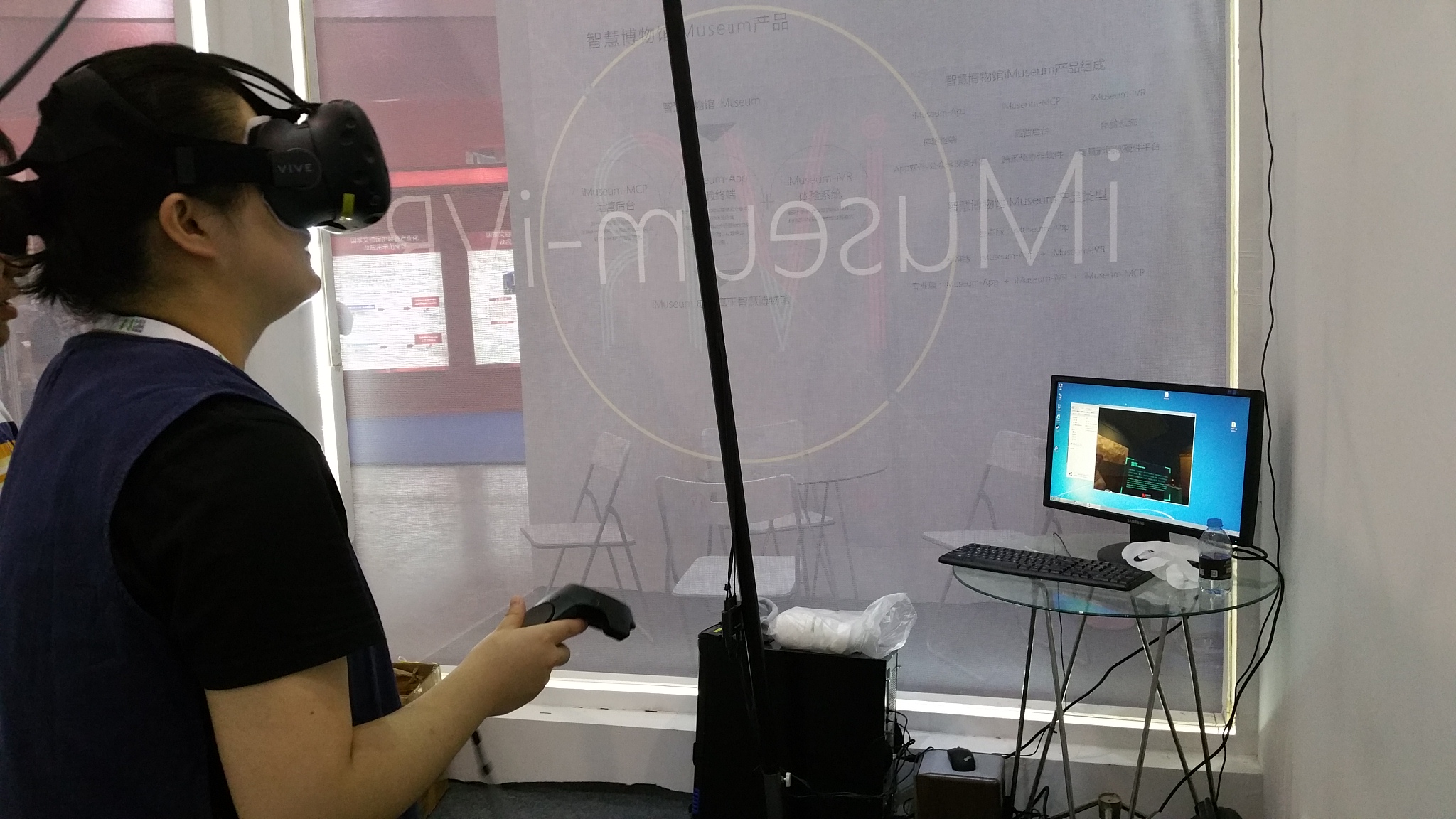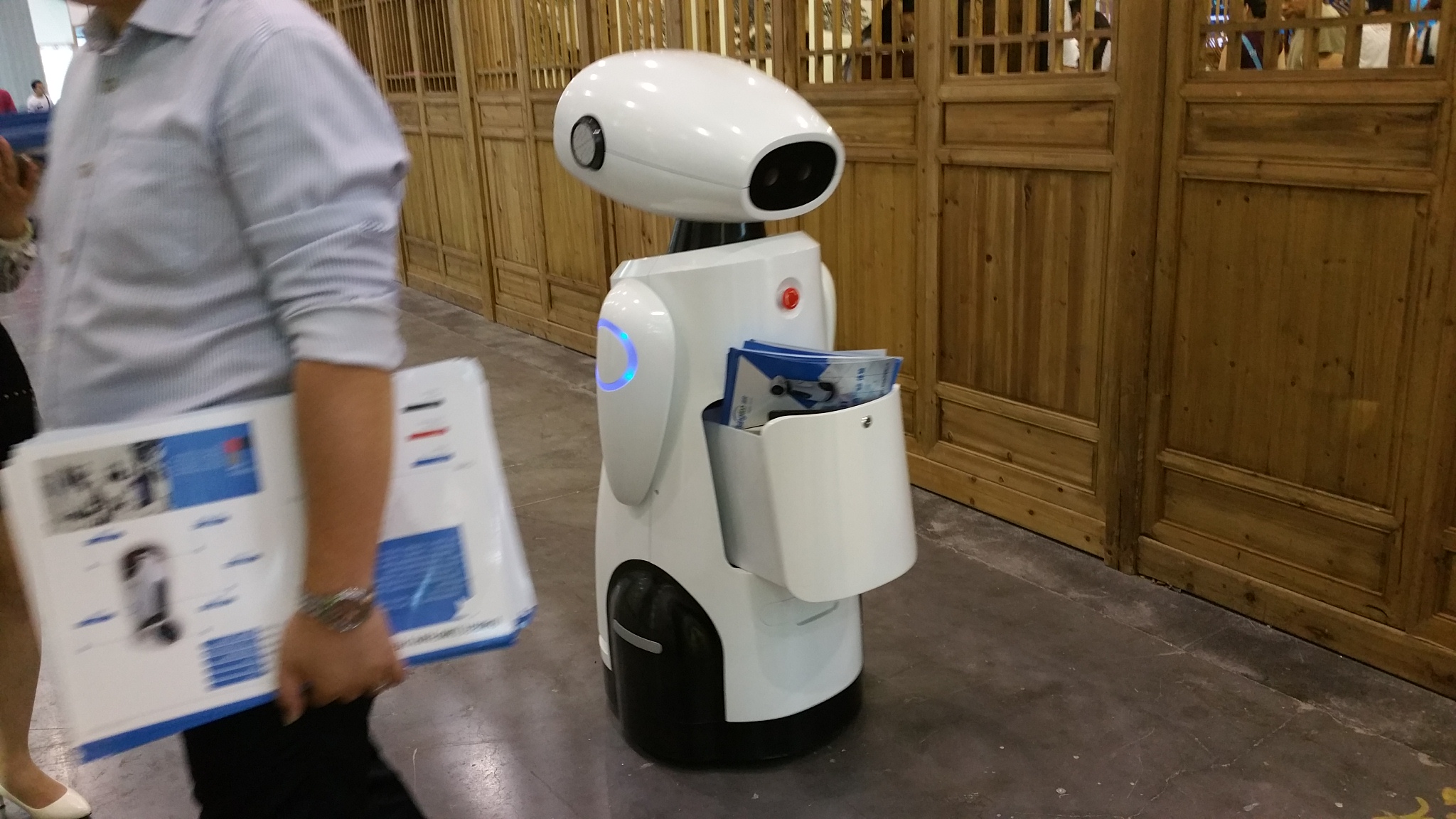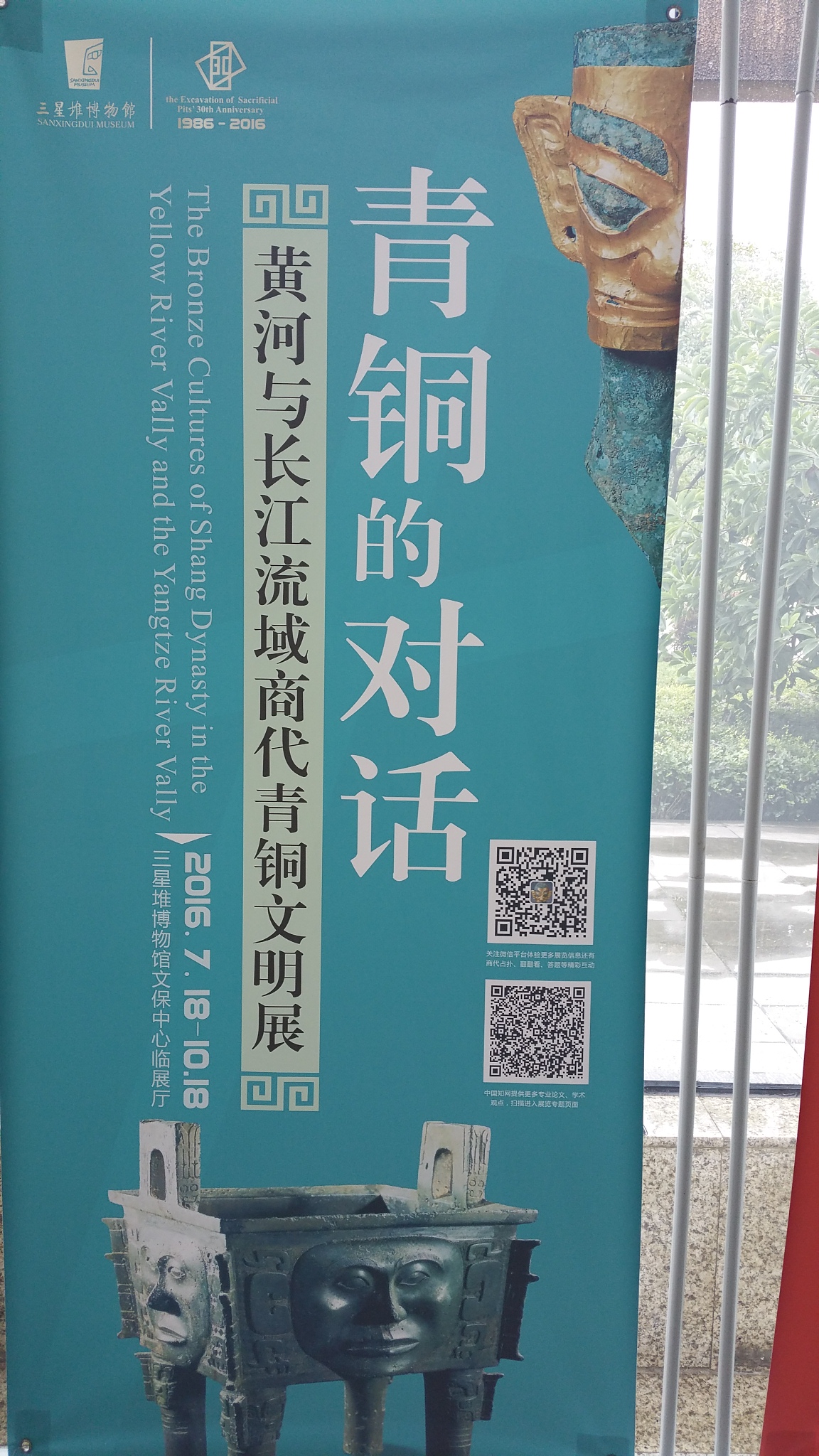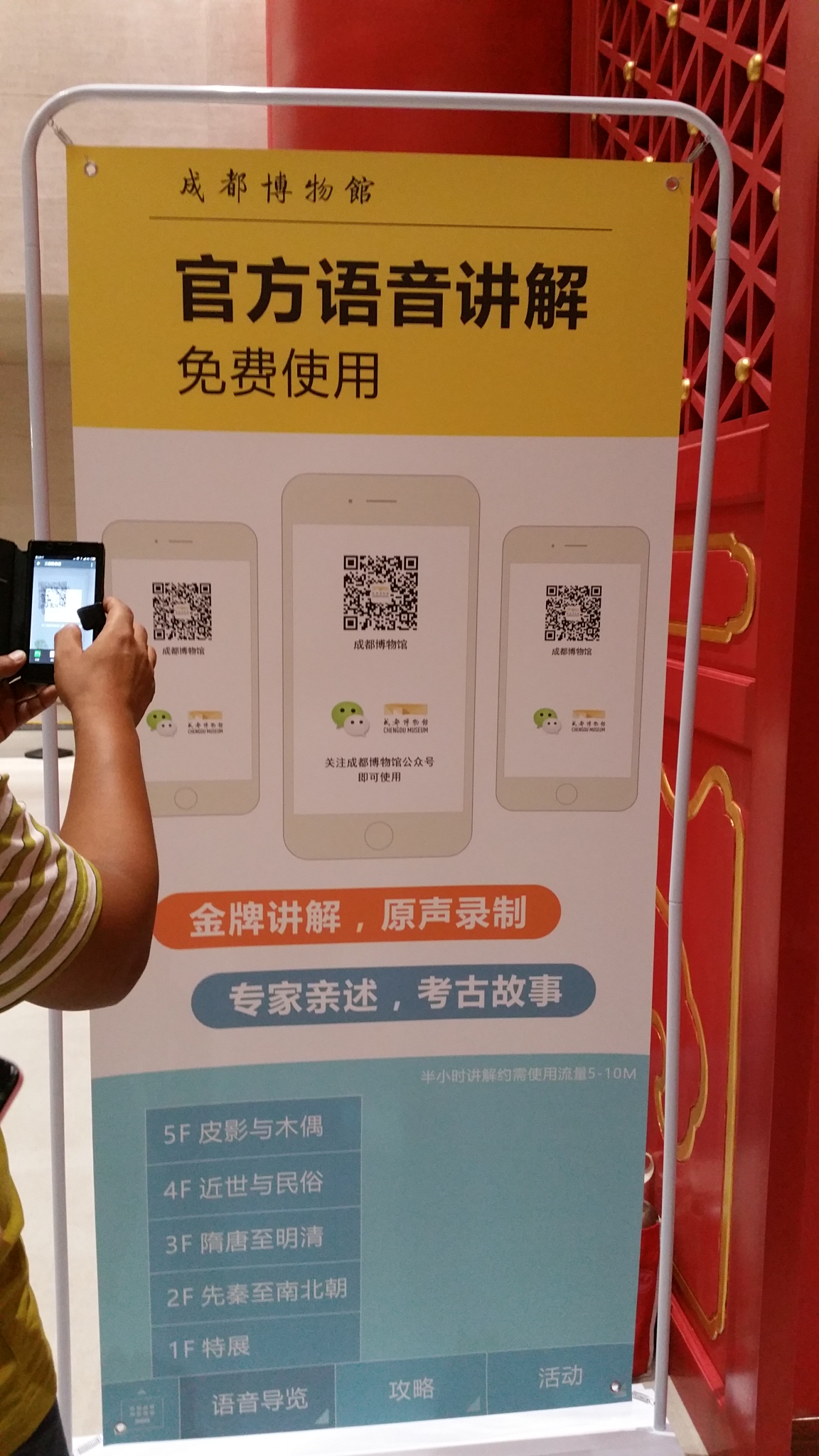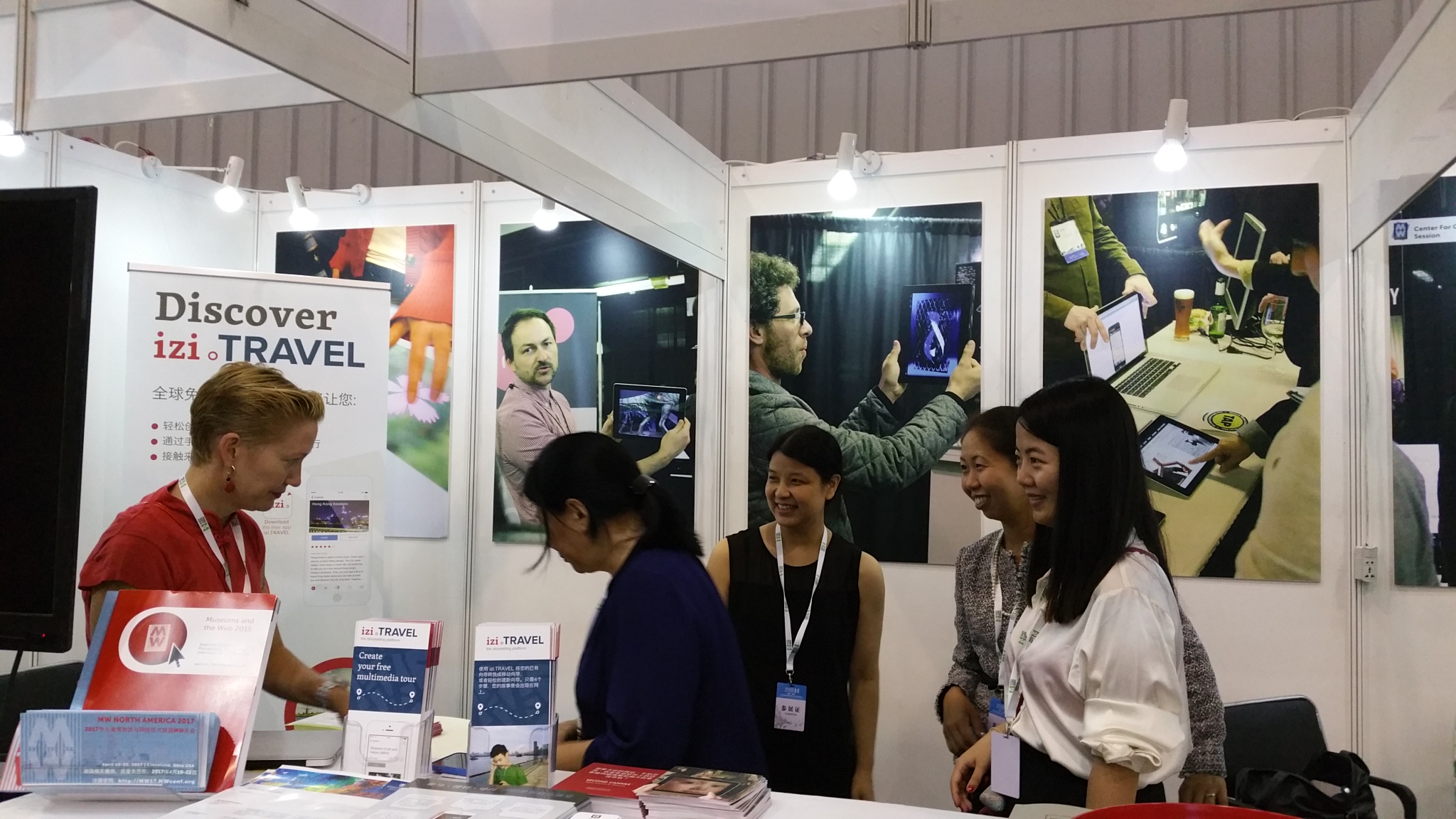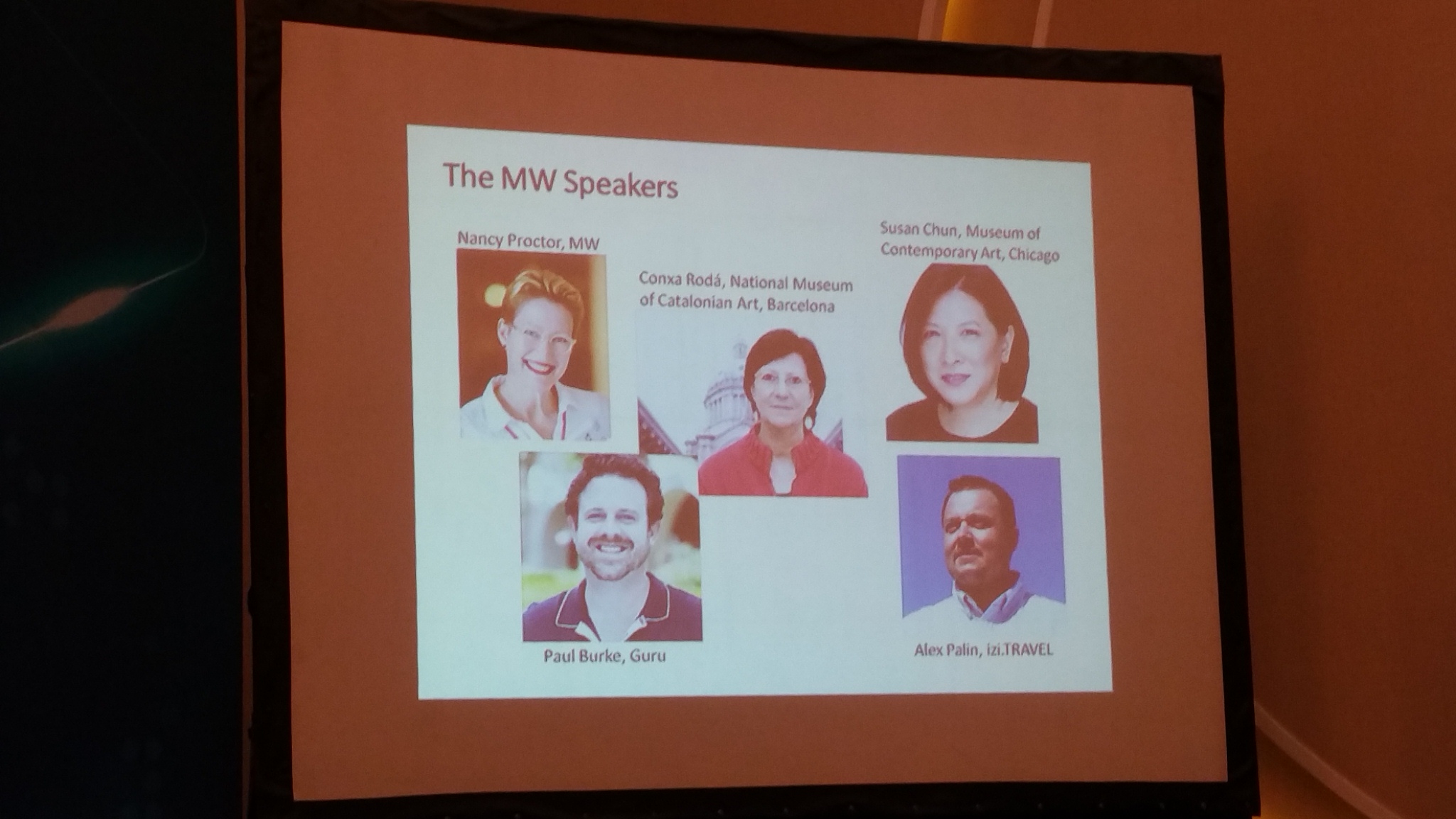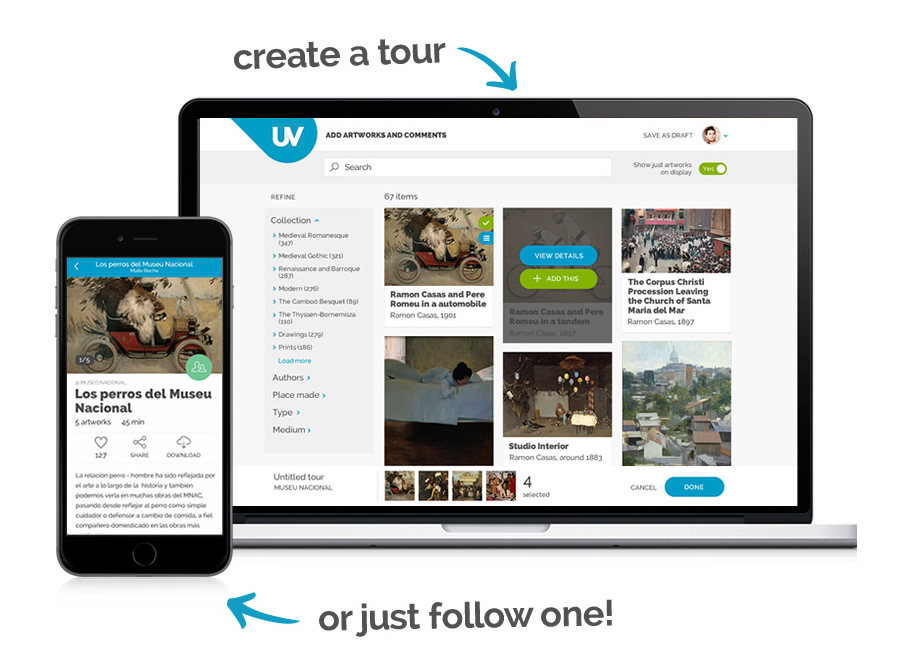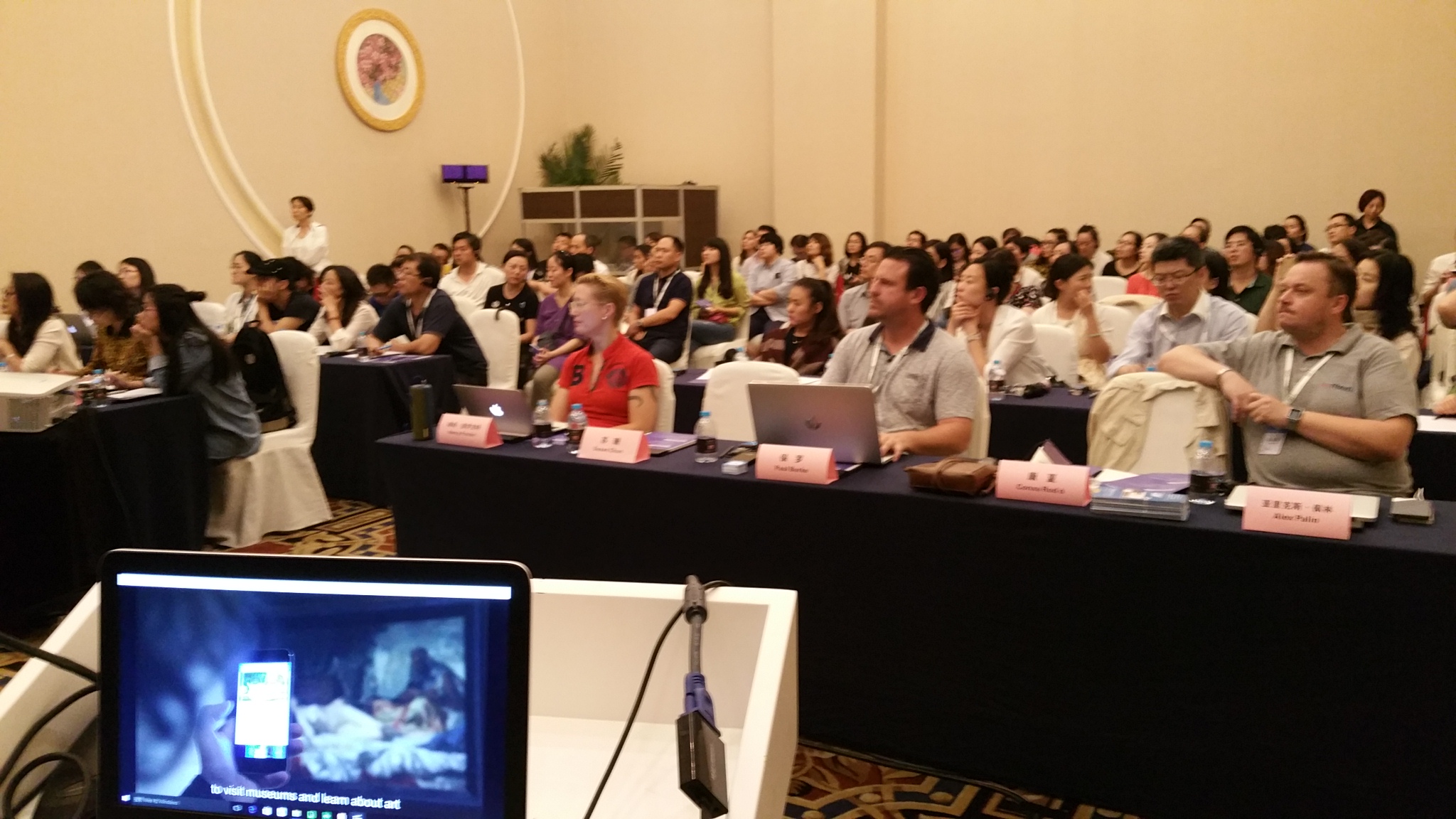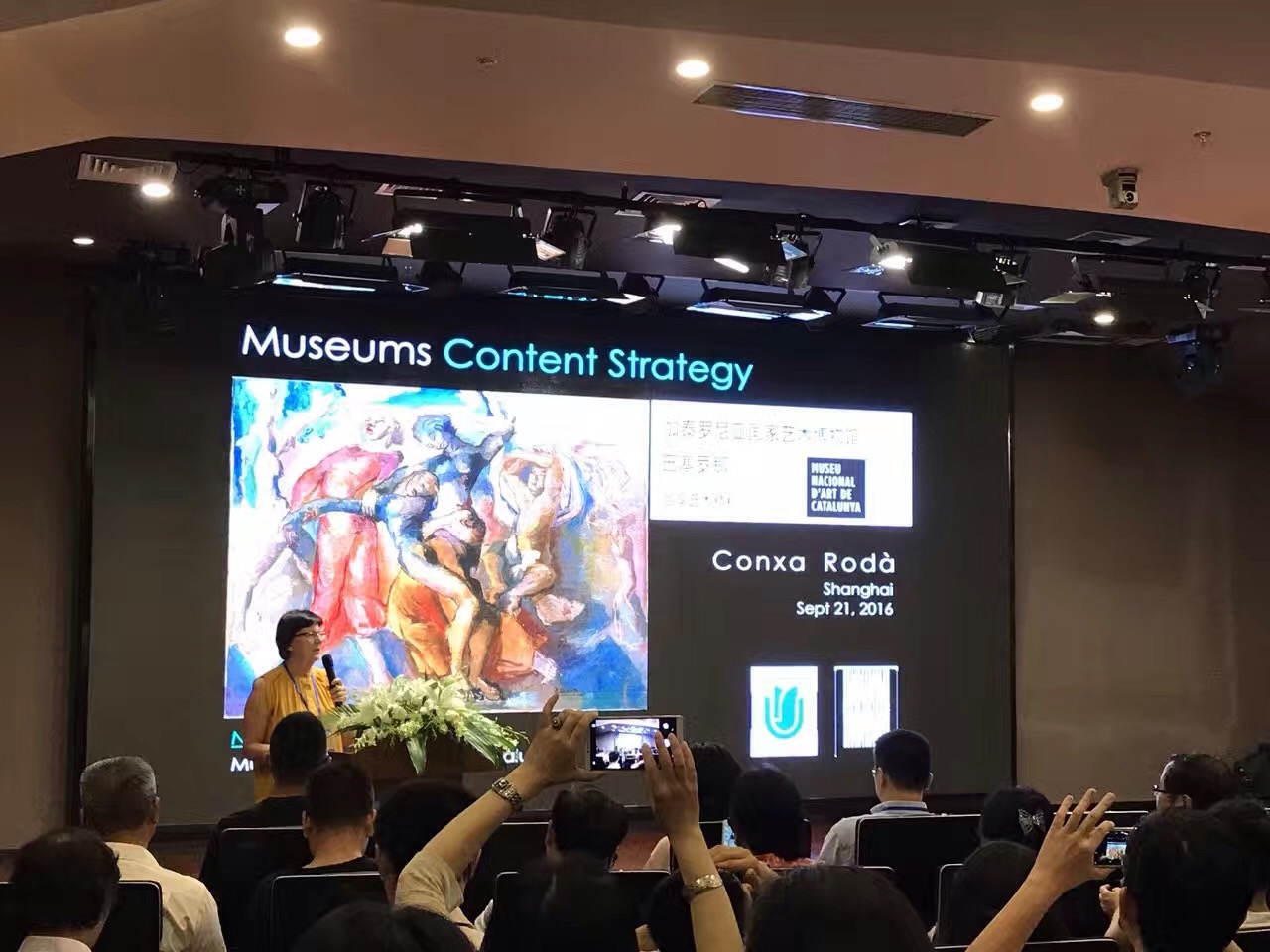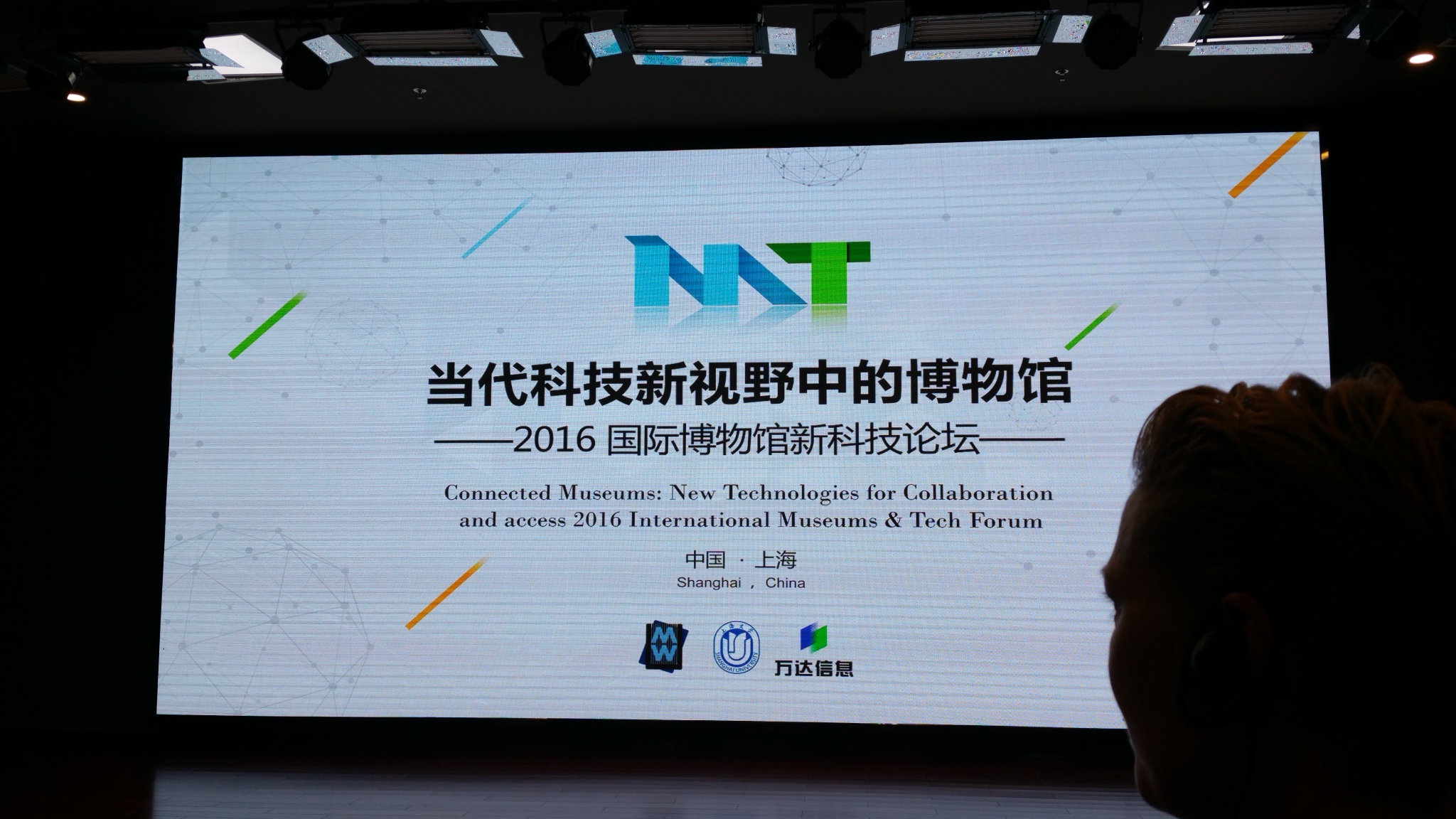Conxa Rodà
In an unexpected way, both because of the lack of warning and due to the fact of being so far away, the Museu Nacional d’Art de Catalunya has been invited this September to go on a tour of three Chinese cities −Chengdu, Shanghai and Wuhan− to speak about museums and digital.
In two posts I will share a chronicle about the tour – the exhibition, the talks, the visits, and also I’ll try to give a glimpse about what I was able to take away from the museums there. I cannot pretend in so few days to have got to know enough about such an immense reality, with more than 4,000 museums in the country, but I will dare to try to describe some of the characteristics.
The first stop was in the city of Chengdu. Coinciding with the major Biennial MPT-Expo, the Chinese Museums Association organised a programme of talk and via Museums and the Web the museum was invited to participate along with experts from the MCA (Museum of Contemporary Art of Chicago and the American Alliance of Museums. The second visit took place in Shanghai, in which, pivoting around the presentation of the project of the new Museum of Shanghai University, the university, with the support of the Wonders group, organised a museum conference. And the last stop was in Wuhan, where its university organised a workshop fundamentally aimed at its master’s degree students to share experience of the Chinese and western museums. As well as giving talks, we had the occasion to meet with directors of various museums, which made the whole experience very enriching.
The Museums and Technology Expo, Chengdu
The exhibition MPT-Expo, the Chinese Museums and Relevant Products and Technology Exhibition, held its seventh edition this year. It is an immense showcase for the museums of the country and of the companies that provide services to museums and heritage. It could be compared with the fair Museum Expressions in Paris, today called Museum Connections, or the MUTEC, the International Trade Fair for Museum and Exhibition Technology which is held in Leipzig, Germany.
The expo receives an affluence of around 80,000 visitors throughout its four days. You can see cutting-edge technology in mobile, in 3D, in image research, in virtual reality, robots as museum guides, etc.
Virtual reality iMuseum developed by Multispace and Robot-guide of museums
Some characteristics of the Chinese museums
Of what I was able to catch, some of the main features would be:
- very audience-centered, education as a priority. Education in its broadest sense, and with a clear vocation for making museums accessible to people and giving many clues to the visitor for interpretation.
- a lot of insistence on the concept of smart museum. Understood as an intensive use of digital technology, of providing access to the collections digitally, from the mobile, interactive touch screens, virtual reality, etc.
- wide use of digital experiences and multimedia interpretation in-galleries but still needing to grow the online collections
- free-of-charge admission in the majority of museums
- extensive programme of volunteers in museums
- social pressure in favour of open content, and internal pressure by some of the professionals of the museums also, but the institutions are still reluctant to open the data, even though they are beginning to speak about it.
- critical reflection about the websites of Chinese museums: the professionals themselves don’t hide that in general, the websites are not very up-to-date, not very attractive visually, the browsing architecture not very user-friendly, etc. Museums seem to have focused their communicative efforts on social media, that they keep regularly updated and are more interactive and accessible for the audience who use them massively and intensely. To such an extent that there are professionals who question if there is a future for museums’ websites.
- local museums need more financial suport from the government.
- this last point is not specific to the museums, but to Chinese culture in general: the importance of guanxi, or the network of personal contacts. Connections or the sphere of influence play a notable role in the personal relations and this is very marked in the company world.
3 social uses to highlight
- the success of the QR codes. They can be found everywhere and applied to all the sectors. The QR codes have ubiquity in the street, within the buildings, in the temples, and even in the seats of planes, and, of course, in practically all the museums. While in our environment, unlike how it seemed it would be at the start, they haven’t really become deep rooted, there the profusion is total.
Use of QR codes in Sanxingdui and Chengdu Museums
- social addiction to the mobile. Much higher than here (and that, for sure, provides many opportunities for museums).
- intensely active in social media, especially in Weibo(the equivalent to Twitter and also with 140 characters as the limit in length) and more and more on WeChat (which offers an aggregation of functionalities like those of Facebook, WhatsApp, Instagram, mobile payment platforms and many more).
The major social networks in the western world –Facebook, Twitter, Instagram− are not accessible in China, and neither are Dropbox or Google (that has its Chinese equivalent in Baidu), and therefore, not Youtube (its equivalent is Youku, the second largest video site in the world after Youtube).
The participation of the Museu Nacional
The management of Museums and the Web had to organise the programme of participation in very little time, given that the negotiations only ended up being agreed barely two months before the event! Therefore, there weren’t any Call for Papers and the organisation directly invited the participants. Ours was the only European museum, probably thanks to the already long collaboration with MW as member of its international programme committee and of the jury for the awards Best of the Web. We are very grateful to MW and to its co-director, Nancy Proctor, for having been chosen, and also to the Chinese Museums Association and to the universities of Shanghai and Wuhan and to Wonders group for the invitation.
We in the museum presented 3 talks:
- Connecting the Museum Collection with the Audience via a Participatory App
In Chengdu we presented the app developed by Unique Visitors in collaboration with our museum.
This social app goes around the idea that we all can be content curators, we can all create our own narrative or itinerary, and, most importantly, share it. Visitors are offered the view of other visitors as well, thus lowering the barrier to access knowledge that sometimes academic or expert information may mean. And the museum gets new insights of the audience via crowdsourced recommendations
In Shanghai we shared a keynote about content strategy. To appeal to our users, we museums deploy a diversity of platforms and channels. The more we spread our content into a variety of channels and platforms, the more we need a solid Content Strategy. The outcome of a content strategy is basically to produce better content and to have better processes of content planning, creation and management. It helps us to better serve our audiences and fulfil our museum’s mission.
And in the Univesity of Wuhan, we spoke about digital transformation, which means an integral and unified approach that links the museum’s mission with audiences needs and expectations enhanced by digital. Digital transformation is more a social change than a technological one. The current social change demands an open mind and new ways of working: more connected, more agile, more cross-functional, more user-centric. Digital transformation affects the whole organisation.
The tour was a valuable experience for our museum in various ways:
- diffusion of the museum and of the projects within the Chinese professional environment.
- strengthening of the relations with professionals of museums, which extended those that the management of the museum had already established in terms of travelling exhibitions and the boosting of the reception of Chinese tourism.
- the enlargement of the knowledge regarding the interests and expectations of Chinese visitors, both for the meetings as well as for the research published by ICOM and presented in the expo: Survey of museums in the Asia-Pacific region: visitor and staff expectations and perceptions, which I will comment on in my next post.
- the need to provide context and keys of interpretation. The cultural distance is very big and the references that in our setting we take for granted are unknown for audiences from other cultures.
- to become more aware of the importance of having material translated into Chinese if we want to attract and connect with this audience. A public that, in general, doesn’t speak English. A public that is still incipient in our museums, but of foreseeable growth over the forthcoming years. In this sense, good examples are the Met (Metropolitan Museum of Art) with a Weibo account since end 2013 and later on WeChat, and also the Palace of Versailles and the museum of the Louvre that, in 2015, opened profiles on WeChat, and the Louvre also on Weibo, and they regularly publish in Chinese. In the case of the Louvre, in 2014, it received more than 470,000 Chinese visitors, and in Versailles, 11% of the visitors came from China. In Spain, the Thyssen has been the first Spanish public museum with a web in Chinese and a WeChat account. Closer to home, the Museu Dalí of Figueres has launched a Chinese version of its website, not simply translated but with adapted content.
8 concepts shared between the Chinese and western museums
The cultural and political context is, as we know, profoundly different to ours, of western contexts, but some of the trends and challenges in the field of museums and heritage coincide:
- the conception of museums as educational institutions
- the concern for how the museums should tackle innovation, digitisation
- explosion of the mobile and the social media
- the aim of providing the user with a better experience
- the danger that the museums might not be aligned with the society
- the importance of ongoing evaluation
- the need to standardise the data
- how to face and position the museum regarding open content
It is true that in China they have major challenges, as we already know, in terms of freedom of speech, labour conditions, pollution or the fight against corruption. In the field of museums, an extremely accelerated growth is taking place of spectacular new buildings which perhaps sometimes are without a sufficiently defined museological plan.
Nevertheless, in terms of the everyday running of the museums, I have been able to get to know a reality which is quite similar to ours, with a priority interest in the experience of the users, in education, in digitising the collections. And, in many cases, with an advanced use of the technology that we would certainly like to have in many of our museums.
I am absolutely convinced that we can learn mutually from the respective experiences. The directors of the museums and universities that we met up with expressed their wish to open up ways of collaboration. In another post we will see some of the museums we visited and their projects and challenges.
Recommended links
Talking of museums in China /2, Conxa Rodà, 2016
10 Most Popular Social Media Sites in China (2019 Updated)
10 Chinese Social Media Sites You Should Be Following, 2013
Understanding social media in China, McKinsey, 2012
As Chinese Tourism Increases, American Museums Adapt, New York Times, 2015
Facts and statistics about Social Networks in China
Pioneering Wechat by The Palace Of Versailles, Slideshare, by Elise Albenque, 2015
Interview at Nancy Proctor, CCCB, MuseumNext-Barcelona, 2012
Co-directora del Curs d'Estratègia Digital_UOC_Museu Nacional d'Art de Catalunya
Co-directora del congrés CIMED de Museos y Estrategias Digitales

